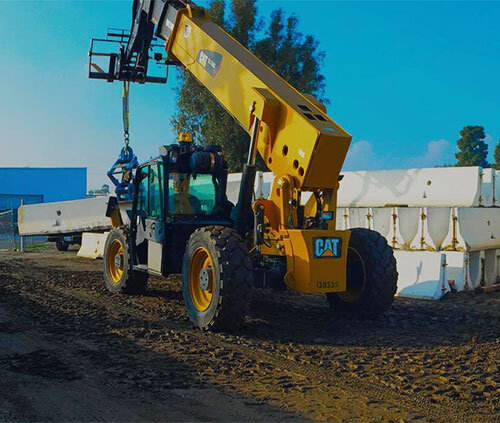Forklift Rental: Heavy Training Equipment for Warehousing and Extra
Wiki Article
Maximize Your Spending Plan by Recognizing the Expenses Linked With Building And Construction Devices Rentals
Comprehending the full scope of expenses associated with building devices rentals is essential for optimizing your budget. What techniques can be employed to successfully handle these costs and make sure a much more reliable rental experience?Summary of Rental Expenses
When thinking about building devices rentals, recognizing the associated costs is extremely important for effective budgeting and project preparation. Rental costs can vary substantially based on a number of variables, including tools type, duration of leasing, and place. The preliminary rental cost commonly shows the devices's market need and its associated functional capacities, influencing the overall expense.Along with the base rental price, ancillary prices may emerge, such as transportation fees, fuel additional charges, and maintenance charges. It is important to represent these extra expenditures to accurately assess the complete cost of leasing devices. In addition, the rental duration can impact rates; longer rentals might certify for discounted rates, while temporary leasings may sustain higher day-to-day charges.

Break Down of Rental Prices
An extensive understanding of rental rates is important for service providers and project managers aiming to maximize their budgets. Rental rates for construction tools usually are composed of a number of components, including base rates, time-based charges, and usage costs.Base prices are the core fees linked with the rental of the tools, commonly identified by the kind and size of the machinery. These prices can vary considerably, affected by aspects such as tools demand, schedule, and regional market patterns. Time-based charges, which might be daily, weekly, or monthly, serve to suit different job timelines and rental durations.
In addition, rental rates may consist of usage costs, which apply when tools is made use of beyond a defined limit, making sure that the rental company can make up damage. Seasonal demand variations can likewise impact rental prices, with peak building seasons usually regulating greater rates.
Furthermore, recognizing the rental business's policies pertaining to upkeep and insurance can give further understanding into the general expense structure. By analyzing these parts, contractors can make informed choices, guaranteeing the option of rental equipment straightens with both job demands and budget restraints.
Extra Fees to Take Into Consideration
Understanding the complexities of additional costs is crucial for professionals to handle their overall rental costs properly. Beyond the common rental prices, numerous auxiliary fees can substantially affect the total cost of devices rental. These charges commonly consist of shipment and pick-up fees, which can vary based upon range and logistics associated with carrying the equipment to and from the work website.Moreover, some rental business may impose fuel additional charges if the devices is returned with less fuel than when rented out. It is likewise necessary to be mindful of potential cleansing costs, particularly for customized tools that requires complete maintenance after use.

Extensively reviewing the rental agreement and clarifying these added costs upfront can aid contractors ensure and stay clear of unexpected costs that spending plans stay undamaged throughout the job lifecycle.
Repair And Maintenance Costs
Routine maintenance and repair service costs are often ignored elements that can dramatically affect the total cost of building devices services. When renting devices, it is vital to consider not just the rental fees but likewise the possible costs related to keeping the equipment in optimum operating problem.Many rental business include basic maintenance as component of the rental contract; however, much more unanticipated failures or comprehensive repair services can lead to added expenses. It's necessary to assess the rental contract meticulously to understand what maintenance solutions are covered and what responsibilities fall on the occupant.
Moreover, tools that is not properly maintained can lead to inadequacies at work site, possibly enhancing and creating boom lift rental hold-ups task prices. To reduce these dangers, it is advisable to perform normal examinations and keep open interaction with the rental copyright pertaining to any issues that occur throughout use.
Insurance Policy and Responsibility Prices
Insurance and responsibility prices are crucial components that can considerably influence the overall cost of building equipment rentals (dozer rental). These prices make sure that both the rental company and the client are secured from potential financial losses occurring from mishaps, damage, or burglary during the rental period
Furthermore, clients must understand any type of deductibles or exemptions in the insurance plan, as these can affect possible out-of-pocket expenses. Comprehending the terms of any type of insurance policy coverage is crucial to avoid unforeseen prices. Ultimately, budgeting for insurance policy and liability costs can aid ensure a smoother rental experience and secure versus financial dangers related to construction jobs.
Conclusion
In final thought, a thorough understanding of the costs connected with building and construction equipment rentals is necessary for reliable budget administration. By evaluating rental rates, additional fees, maintenance expenses, and insurance coverage demands, companies and people can reduce unforeseen expenditures. This tactical strategy not only enhances cost-effectiveness however additionally guarantees that jobs advance smoothly and effectively. Ultimately, informed decision-making regarding devices services adds to the total success of building and construction endeavors.Rental expenses can vary substantially based on a number of elements, consisting of equipment type, period of leasing, and place (rental company near me). The rental duration can affect pricing; longer services may qualify for affordable rates, while temporary rentals could incur greater everyday fees
By conducting thorough research and engaging with reputable rental firms, contractors can successfully navigate the intricacies of rental prices, inevitably maximizing their financial resources.
Past the conventional rental rates, different supplementary fees can significantly impact the total expense of tools rental. Rental companies frequently give liability insurance coverage that covers injuries to third parties or damage to residential or commercial property, while devices damages insurance can cover the expense of fixings or substitute if the rented out equipment is damaged.
Report this wiki page